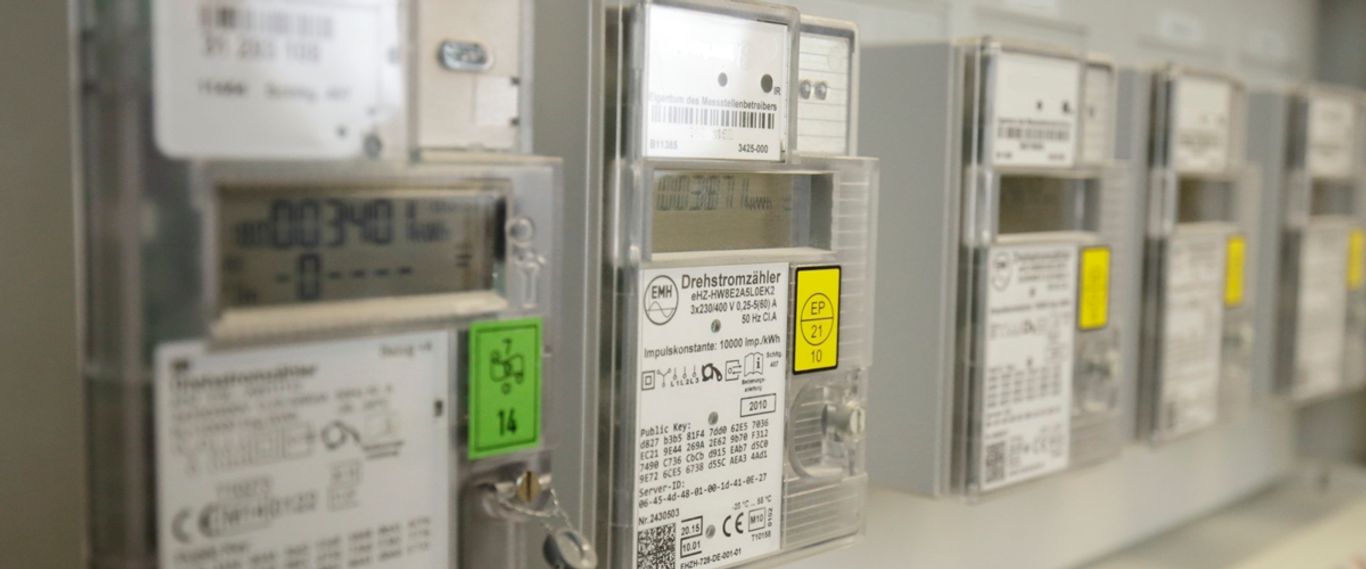Meter calibration
All our meters are calibrated.
As per the regulations set out in the Measurement and Calibration Act (MessEG) and the associated Measurement and Calibration Ordinance (MessEV), the actual calibration intervals must not be recognisable on the meter. As such, you will not be able to find any information about the calibration intervals for your meter on the meter itself. The age of the meter and the year in which it was manufactured are also no help in working out whether the meter is still calibrated.
The regulations set out in the MessEG and the MessEV allow (multiple) extensions of the calibration.

Calibration of new meters
Every meter which is being used to measure electrical energy for the first time is calibrated or is covered by a conformity evaluation in line with European MID (Measuring Instruments Directive) guidelines.
Extending the calibration
We, as with many other grid and/or measurement centre operators, procure large quantities of meters which have already undergone an initial calibration check at the manufacturer or which are covered by a conformity evaluation in line with the MID.
As per the measurement and calibration act (MessEG) and the measurement and calibration ordinance (MessEV), not every meter must be recalibrated; rather, a "random sample procedure" may be used. This involves putting similarly-built meters into batches and using the principle of contingency to select a representative number of meters from each batch as random sample meters. To prolong the calibration interval, the random sample meters are dismantled and checked at a government-approved checking centre. If this check reveals that the random sample meter meets the requirements stipulated in the calibration ordinance, the calibration validity of the whole batch is extended and the batch may continue to be used for commercial measurement. If the test results are negative, all meters in the batch need to be replaced. We will contact all customers affected by this situation to propose an appointment for replacing the meter.
After the initial calibration and/or the introduction onto the market of a meter with an MID conformity evalulation, the calibration interval may be extended several times via the random sample process. The calibration interval extends by 5 years. This means that a meter which was built and brought into circulation, for example, in 1978, can meet the statutory calibration requirements, be installed at a withdrawal point and be used to measure energy consumption.
It does not matter what type of energy consumption the meter measures e.g. that of a storage heater or a household.
The government-approved test centre informs the Berlin branch of the Landesamt für Mess- und Eichwesen Berlin-Brandenburg (Regional Authority for Measurement and Calibration Berlin-Brandenburg), within whose remit we fall, about the upcoming check and the results of the check. The calibration authority checks the documents that have been submitted and confirms the result of the check to the government-approved test centre. Finally, the government-approved test centre notifies us of the result of the process as a whole and the extension of the calibration interval.
Laws and ordinances
Mess- und Eichgesetz (MessEG - Measurement and Calibration Act)
Mess- und Eichverordnung (MessEV - Measurement and Calibration Ordinance)
All downloads in German language only.
